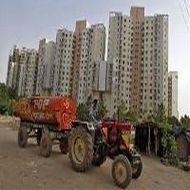Such is the human race, often it seems a pity that Noah... didn't miss the boat. ~Mark Twain
By Ashwin Dewan - India Syndicate Sun 1:25 PM
Perhaps, a saying that most aptly sums up what some people are becoming day by day and more so in my country of India which is renowned for its rich cultural heritage and tradition. But, recent events that the dictionary defines as and the world knows as "rape" has got me thinking and thinking hard... Is India slowly slipping back to the dark ages.

Trust me. I am justified in saying this because when a 23 year old girl is brutalised (am not using the word "rape" here because i want to stress on the epic proportions of this horrendous act) by using the word " brutalised". How else can one react when one reads about a young girl who did nothing wrong but was raped violently by a gang of animals(calling them men would be respecting and putting them on par with us normal human beings), beaten up to the point that her intestines have to be removed..Sheer disgust and horror.
As the young and brave girl fights for her life, my thoughts just recollect other such events that have blackened the year starting from February when a woman was raped at gunpoint inside a car in Calcutta. There were widespread protests just like the protests that we are witnessing right now. The media was constantly on the case and as the protest grow louder and if I may add, more violent by each passing minute...can we blame the protestors?
Every day, we hear cases of rape from all over the country. Of girls being raped by beasts, of fathers raping their own daughters and what's more the brother...Oh!Brother...too decides to join in the act of animals and proceeds to rape his own sister. Perhaps, we are being slowly dragged to the dark ages. After all...how can u justify actions when apart from young girls being violated, the female form is being seen so much as an object of sexual gratification that can be violated anytime, anyplace that even age has ceased to matter. Case being in point...Everyday in the papers, I read of how six to even as small as three year old girls being violated...Horror and more horror.

Trust me. I am justified in saying this because when a 23 year old girl is brutalised (am not using the word "rape" here because i want to stress on the epic proportions of this horrendous act) by using the word " brutalised". How else can one react when one reads about a young girl who did nothing wrong but was raped violently by a gang of animals(calling them men would be respecting and putting them on par with us normal human beings), beaten up to the point that her intestines have to be removed..Sheer disgust and horror.
As the young and brave girl fights for her life, my thoughts just recollect other such events that have blackened the year starting from February when a woman was raped at gunpoint inside a car in Calcutta. There were widespread protests just like the protests that we are witnessing right now. The media was constantly on the case and as the protest grow louder and if I may add, more violent by each passing minute...can we blame the protestors?
Every day, we hear cases of rape from all over the country. Of girls being raped by beasts, of fathers raping their own daughters and what's more the brother...Oh!Brother...too decides to join in the act of animals and proceeds to rape his own sister. Perhaps, we are being slowly dragged to the dark ages. After all...how can u justify actions when apart from young girls being violated, the female form is being seen so much as an object of sexual gratification that can be violated anytime, anyplace that even age has ceased to matter. Case being in point...Everyday in the papers, I read of how six to even as small as three year old girls being violated...Horror and more horror.


 Illicit Financial Flows from Developing Countries, said.
Illicit Financial Flows from Developing Countries, said.







